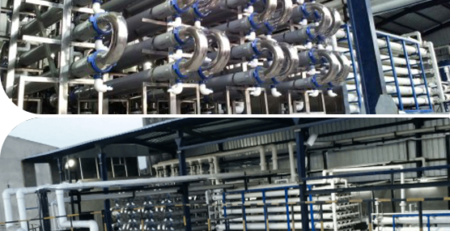Advanced Security and Reliability Using IoT and AI in Gas Pipeline & Distribution Networks
How IoT (Internet of Things) and Artificial Intelligence (AI) technologies work together to detect, prevent, and respond to theft, robbery, and leaks in gas pipeline supply and distribution systems, including both technical methods, infrastructure components
Advanced Security and Reliability Using IoT and AI in Gas Pipeline & Distribution Networks
🧩 1. Problem Landscape: What Are the Risks?
Before diving into the technologies, it’s important to understand the real threats:
💣 Physical Threats:
- Illegal gas tapping by drilling into the pipeline for free gas.
- Meter tampering or bypass to avoid billing.
- Siphoning from city gate or regulator stations.
- Pipeline puncturing due to excavation, vandalism, or sabotage.
- Corrosion-induced leaks from aging pipelines.
🧠 Operational Threats:
- Undetected leaks due to poor instrumentation.
- Lack of data at remote segments leads to slow response.
- Manual inspection delays.
- Data manipulation in metering at custody transfer points.
🛠️ 2. How IoT Works in Gas Security
🧪 A. Multi-Modal Smart Sensors Across the Pipeline Network
IoT devices are deployed at multiple levels:
🔸 Transmission Line Level (long-distance pipelines):
- Pressure Transmitters (PTs)
- Flow Totalizers
- Corrosion Rate Probes
- Fiber-optic cable sensors along Right-of-Way (ROW)
- Line pressure anomaly sensors (used in detecting silent theft)
🔸 Distribution Level (urban pipeline grids):
- Smart meters with anti-tamper sensors
- Micro-leakage sensors (e.g., for plastic pipes)
- Temperature and humidity sensors (for gas behavior)
- Camera traps near sensitive locations (gas banks, district regulators)
🔸 Compressor/Valve/Regulator Stations:
- Vibration sensors on valves and turbines
- Motor current sensors
- Valve position indicators with lock-status
- Gas detectors for H₂S, CH₄, or CO exposure
🔸 End-User Level (residential/industrial):
- Smart prepaid/postpaid gas meters with:
- Magnetic field detection
- Reverse flow detection
- Tamper seal break alerts
- Usage anomaly alerts
📡 B. How IoT Enables Real-Time Security
| Function | Example |
| Continuous gas pressure and flow tracking | Detects tapping, unauthorized usage |
| Leak detection via gas detectors + mass balance | Rapid detection, automatic alert |
| Geo-tagged alarms and surveillance | GPS-enabled sensors pinpoint threat location |
| Wireless transmission | LoRa, NB-IoT, 4G/5G, or satellite for remote sites |
| Automatic Valve Control | IoT relays command from AI logic to close valves |
| System-wide SCADA/IIoT dashboards | Real-time visualization, predictive analysis |
🤖 3. How Artificial Intelligence Enhances Detection and Response
AI analyzes millions of data points from IoT sensors to perform tasks human operators can’t do efficiently in real-time.
✅ A. Anomaly Detection in Flow, Pressure & Usage
- AI models learn the normal signature of pressure, flow, and consumption at each segment.
- Any deviation (e.g., sudden drop in pressure + unexpected flow) is flagged.
- Even small leaks or slow siphoning theft can be detected before they cause massive loss.
✅ B. Meter Data Intelligence
- AI checks for sudden drops in usage, sharp increases, or consumption during disconnected periods.
- Tamper classification models determine if unusual usage patterns are technical, behavioral, or criminal.
✅ C. Pipeline Tamper Recognition Using Sensor Fusion
AI combines data from:
- Pressure sensors
- Vibration sensors
- Camera feeds
- Infrared intrusion detectors
If the model sees ground vibration + pressure drop + motion detection, it may conclude:
“Tampering or theft is in progress at Section B12 – Trigger alert and isolate.”
✅ D. Predictive Leak Risk Modeling
AI uses historical pipeline condition data (material, corrosion index, repair history, ground movement) to forecast risk of leak or failure at vulnerable segments:
- Predictive alerts can prevent catastrophic explosions
- Maintenance teams are dispatched before failure
✅ E. Geo-Behavioral AI for Theft Prevention
AI detects repeat theft locations (hotspots), time-of-day patterns, and common behavioral patterns:
- “Gas theft is likely at Node X between 2–4 a.m.”
- Suggests drone surveillance at that hour, and flags nearby activities.
🛰️ 4. Integrated Emergency Response with AI + IoT
In case of leak or theft:
| Step | Action |
| Leak detected (by sensor or acoustic monitor) | Signal sent to AI engine |
| AI validates (cross-checks with pressure, flow, camera) | Reduces false alarms |
| Valve command sent | IoT-controlled actuator shuts off flow |
| Geolocation of alert plotted | Emergency crew receives GIS-based instructions |
| Mobile command app activated | Drone/camera feed shared with team in real-time |
🔗 5. Blockchain & AI for Tamper-Proof Custody Transfer
In international gas pipelines:
- Smart meters at border points can log flow and gas quality data to a blockchain ledger.
- AI checks for manipulation in delivery volumes vs. contract specs.
- Ensures neither side can claim fraudulent volumes.
- Combined with secure digital twin systems, these nodes offer audit-proof traceability.
🎯 6. Real-Life Use Cases
🏭 Case 1: City Distribution Network (Smart Urban Grid)
- Problem: Illegal household tapping in high-density housing
- IoT: Smart meters with tamper detection + LoRa connectivity
- AI: Learned patterns of illegal consumption
- Result: 40% reduction in unauthorized use, better recovery of dues
🌍 Case 2: Cross-Border Pipeline (e.g., Central Asia to Europe)
- Problem: Disputes over theft and gas losses
- IoT: Installed flow meters and gas quality sensors at each station
- AI: Predicts losses, provides real-time accountability, and flags unaccounted-for-gas (UFG)
- Blockchain: Immutable record of each delivery
- Result: Improved geopolitical trust, zero theft reported after 6 months
🏞️ Case 3: Remote Transmission Line in Desert
- Problem: Difficult to patrol long pipeline stretches
- IoT: Pressure sensors every 5 km, solar-powered
- AI: Predicts which segments are likely to leak soon
- Drones: Dispatches drone to inspect without needing human crew
- Result: 60% decrease in leak response time, 70% cost savings in patrols
🛡️ 7. Benefits of IoT + AI for Gas Pipeline Security
| Area | Benefit |
| Leak Detection | Rapid, automated, and highly accurate |
| Theft Prevention | Smart meter analytics + pressure monitoring |
| Sabotage Monitoring | Sensor fusion detects physical tampering |
| Response Time | Emergency teams dispatched instantly |
| Automation | Valve shutoff, alarms, alerts handled without manual intervention |
| Accountability | Audit trail for all events |
| Risk Reduction | AI forecasts incidents before they happen |
⚠️ 8. Key Technologies Involved
| Technology | Role |
| LoRa, NB-IoT, 5G | Data transmission from field |
| Edge AI devices | Local decision-making without cloud dependency |
| Drones & cameras | Physical visual confirmation and deterrence |
| Digital Twins | Simulation of pipeline for predictive analytics |
| GIS Mapping | Overlay of threats on physical map for precise action |
| Blockchain | Immutable records for metering and custody |
🧭 9. Strategy for Deployment
- Survey network vulnerabilities and theft/leak history
- Deploy layered sensors in critical areas
- Create AI model for anomaly detection based on past data
- Establish response protocols (auto shutoff, alerts)
- Train operators and field staff on interpretation and response
- Continuously refine AI algorithms with new data and feedback
📌 Conclusion
The combination of IoT sensing networks and AI-powered analytics provides a robust, scalable, and proactive framework to:
- Prevent gas theft and tampering
- Detect and respond to leaks in real-time
- Automate emergency responses
- Secure cross-border and domestic gas infrastructure
- Improve operational efficiency, safety, and regulatory compliance











